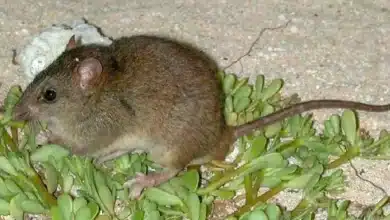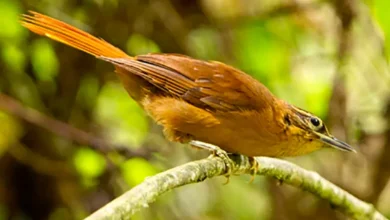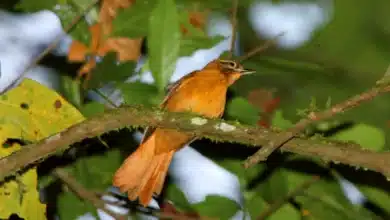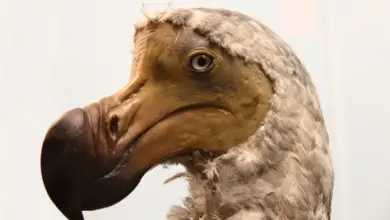The Golden Toad: A Tragic Tale of Extinction and Hope
Scientific name: Incilius periglenes
Date of extinction: 2019
Many amphibians living in forests usually have impressions on their colorful but toxic skin. Yet, under the big threat of habitat loss and global warming, the population of amphibians worldwide is decreasing year by year.
Though scientists are working for solutions to help, some species have become extinct. Among them, the golden toad which is often considered as a “poster child” of the species decline.
In the lush, biodiverse rainforests of Costa Rica once dwelled a creature of extraordinary beauty and rarity – the Golden Toad (Incilius periglenes). This small amphibian, with its stunning, vibrant golden hue, captivated the hearts of scientists and nature enthusiasts alike. However, its story is not one of triumph, but rather a cautionary tale of extinction and the urgent need for conservation efforts.
Origin and Habitat: The Golden Toad was first discovered in 1964 by herpetologist Jay Savage in the Monteverde Cloud Forest Reserve of Costa Rica. Its habitat primarily consisted of high-altitude montane cloud forests, a unique and delicate ecosystem characterized by its misty conditions and rich biodiversity. The toads would breed in shallow pools formed by the seasonal rains, a process crucial to their reproductive cycle.
Diet: Like many amphibians, the Golden Toad was primarily insectivorous. Its diet likely consisted of various small invertebrates found within its forest habitat, including insects, spiders, and other arthropods. This specialized diet played a vital role in the toad’s ecosystem, helping to control insect populations and contributing to the overall balance of its environment.
Extinction: Tragically, the Golden Toad is now considered extinct, with the last confirmed sighting occurring in 1989. The exact cause of its extinction remains uncertain, but scientists believe it to be a result of a combination of factors, primarily anthropogenic in nature.
- Habitat Loss: Deforestation and habitat destruction, driven by human activities such as logging, agriculture, and urbanization, significantly reduced the Golden Toad’s habitat. Fragmentation of its forest home isolated populations, making them more vulnerable to extinction.
- Climate Change: The Golden Toad’s habitat was highly sensitive to changes in temperature and precipitation patterns. Climate change likely disrupted its breeding cycles and altered the availability of suitable breeding sites, further stressing an already vulnerable population.
- Disease: Amphibians worldwide have been devastated by the spread of infectious diseases, such as chytridiomycosis, caused by the chytrid fungus. While there is limited evidence directly linking this disease to the extinction of the Golden Toad, it remains a significant threat to amphibian populations globally.
Saving the Golden Toad: While the Golden Toad may be lost forever, its story serves as a powerful reminder of the fragility of our planet’s biodiversity and the urgent need for conservation action. Although we cannot reverse the extinction of this iconic species, there are steps we can take to prevent similar tragedies in the future.

- Habitat Protection: Preserving and restoring the remaining habitats of vulnerable species is essential for their survival. Establishing protected areas, such as national parks and reserves, helps safeguard critical habitats and provides refuge for endangered wildlife.
- Combatting Climate Change: Addressing the root causes of climate change is crucial for protecting biodiversity. Reducing greenhouse gas emissions, transitioning to renewable energy sources, and implementing sustainable land-use practices are essential steps in mitigating the impacts of climate change on vulnerable species and ecosystems.
- Research and Monitoring: Continued research into the ecology, behavior, and threats facing amphibian populations is essential for informing conservation strategies. Monitoring programs can help detect population declines early, allowing for timely intervention measures to be implemented.
- Public Awareness and Education: Raising awareness about the importance of biodiversity conservation and the threats facing amphibians and other wildlife is crucial for inspiring action and fostering a sense of stewardship towards the natural world. Education programs, outreach initiatives, and community engagement efforts can empower individuals to make informed choices and support conservation efforts.
While the Golden Toad may no longer grace the forests of Costa Rica, its legacy lives on as a symbol of the profound impact human activities can have on the natural world. By learning from the lessons of its extinction and taking decisive action to protect our planet’s biodiversity, we can strive to ensure that future generations inherit a world rich in life and wonder.



